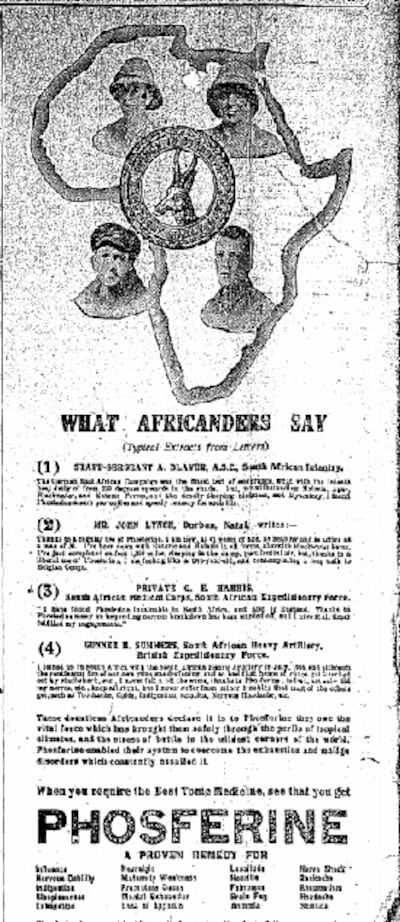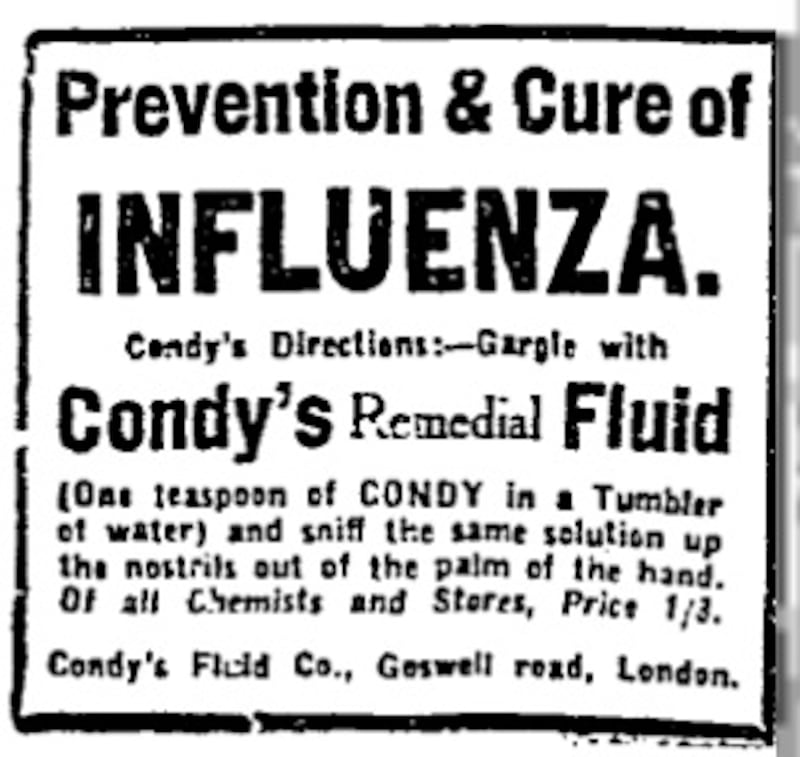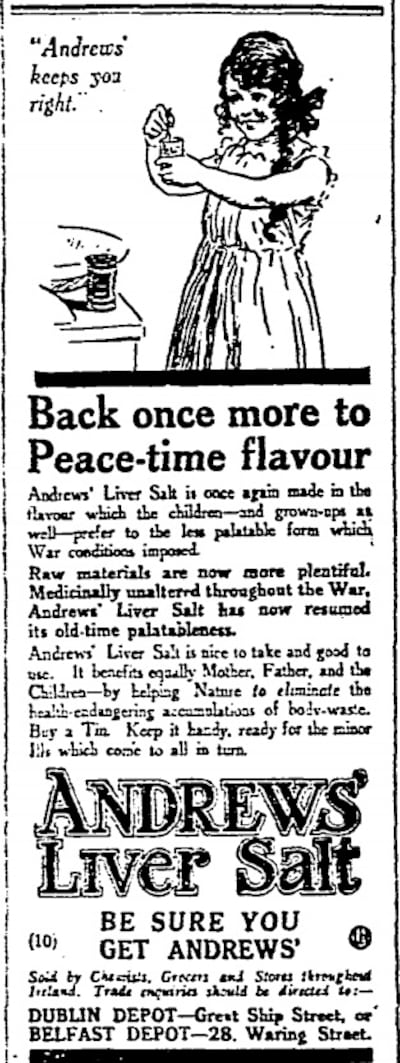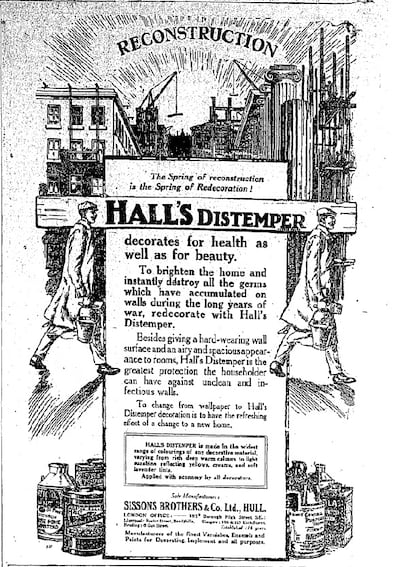Turning the pages of this newspaper back to the editions of May 1919 reveals that Spanish flu, tuberculosis and returning war veterans were some of the major health concerns I00 years ago.

By May, the toll from the 1918-1919 Spanish flu epidemic was waning in Ireland. Dublin's registrar-general recorded 2,476 births and 3,544 deaths over 13 weeks. These included nine from whooping cough, 19 from measles, 141 from cancer, 215 from bronchitis, 410 from tuberculosis, 552 from pneumonia and 731 from influenza.
The devastation in other countries and continents, however, continued unabated. Some stark numbers merited just one sentence in an address to the House of Commons about unrest in India: "last month between 5,000,000 and 6,000,000 people . . . died from influenza; while two-thirds of the population suffered from the complaint".
Meanwhile, the annual meeting of the Women's National Health Association heard that TB cases had begun to increase again. According to Dr Charles Dickson: "The west of Ireland was full of cases contracted from returned Americans . . . The disease so carried from America appeared to be more virulent in Lettermullen, Gorumna, and elsewhere than in New York."

Calls were made for the compulsory reporting of tuberculosis, to enable segregation and early treatment. Dr Hanley, from the association’s sanatorium at Peamount, noted: “Leprosy was practically stamped out all over the country by segregation.” He informed the meeting that 675 patents had been treated at Peamount during 1918, including 95 ex-soldiers and sailors.
Returning soldier
Other reports also discussed the health of returning soldiers. The Joint War Committee of The Irish Times Red Cross Fund proposed to arrange treatment of discharged soldiers suffering from TB and " a hostel for discharged men coming from country districts for treatment in Dublin hospitals". There was also news of a government committee to report on the "immediate practical steps which should be taken for the provision of residential treatment for discharged soldiers and sailors suffering from pulmonary tuberculosis, and for their reintroduction into employment, especially on the land".
The difficulties demobilised nurses faced finding "suitable civil employment" were highlighted in the Weekly Times of May 31st. "There are nurses from the Serbian and Salonika fronts who have worked under the most trying conditions, nurses from East Africa who shared the hardships of troops during a long and arduous campaign, nurses from Belgium who saw the horrors of 1914, nurses who have been in torpedoed ships, and even nurses who have returned from captivity in Germany. "

Postwar “reconstruction” was the focus of a “drawingroom meeting” of the National Society for the Prevention of Cruelty to Children. Robert J Parr OBE insisted the basis of any reconstruction had to be the child. “Infantile mortality in these British islands was a disgrace to our civilisation . . . and the deaths were mainly preventable. Imagine the British Empire run as a business concern, and suppose it was interested in the rearing of pigs. If it was found that out of every thousand pigs 98 died before they were fully grown, there would soon be a change in the ministry.”

“The rate of mortality amongst illegitimate children was appalling,”added Mr Parr. “The lives of these children were an important asset, and it was a duty to save them, and to see that they were provided for. The scheme which the society had in view was that every illegitimate child should be made a ward of course, that it should be registered as such, and that it should be the duty of the court to have a foster parent appointed, regular visitations made, and most important that the man be made to pay.”
The health concerns of corresponding readers a century ago were probably not much different from those of readers today: acne, testicular cancer, heart conditions, superfluous hair, nasal catarrh, constipation and pregnancy. Included in most prescriptions from the newspaper’s physician, however, were keeping the bowels regular with liquorice powder or cascara, and baths – hot, warm, tepid or cold, depending on the condition: hot with turpentine for sciatica, tepid for a “weary worker’, cold for an underweight reader, and warm for “Roseallie” who was experiencing “the change”.
It’s unclear what ailed “Seasider” and “Coachman” but one was instructed to “take baths every night, and wash well with carbolic soap and Jeyes’ fluid mixed in bath, especially under armpits”; the other to: “Take a cold bath every night, and eat or drink nothing for some hours before retiring. The bath is absolutely necessary if you want to be cured.”
The “inside bath” was also recommended in an advertorial which invited readers to: “immediately upon arising in the morning, drink a glass of real hot water with a teaspoonful of limestone phosphate . . . it is intended to wash the stomach, liver, kidneys, and the intestines of the previous day’s waste, sour bile, and indigestible material”.
Gargling
Advertisements that month also reflected the times. Condy’s Remedial Fluid claimed to prevent and cure influenza by gargling and sniffing a solution “up the nostrils”. ‘Hall’s Distemper declared: “The Spring of reconstruction is the Spring of Redecoration! . . . To brighten the home and instantly destroy all the germs which have accumulated on walls during the long years of war”.
And readers were assured that Andrews Liver Salts were “back once more to Peace-time flavour” rather than “the less palatable form which War conditions imposed”.

One tonic claimed testimonials from soldiers: “The German East African campaign was the finest test of endurance. But notwithstanding Malaria, Ague, Blackwater and Enteric Fevers, and the deadly Sleeping Sickness, and Dysentery, I found Phosferine a sure preventive and speedy remedy for such ills.”
Paradoxically, in Westminster a debate in the House of Commons called for the new minister of health to be given controls “over the purveyors of quack medicines”. According to Lord Buckmaster, the country “was at the mercy of a gang of people, who were destitute of honour and scruple, busily engaged, by fraudulent means, in selling drugs and foods which were in many cases absolutely dangerous to health”.
The health benefits of new medicines across the Atlantic were also questionable. The approach of national prohibition was heralded in the United States Patent Office by a flurry of formulas for hundreds of new medicines – "essences of fruit products from which alcohol may be distilled, and tonics properly medicated according to recognised standards, but containing percentages of alcohol, opium, and other drugs".









